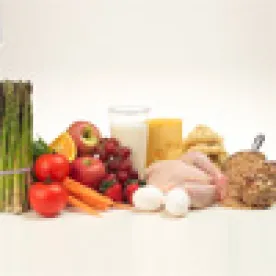On October 19, 2016, the Legislative Affairs Office of the State Council of P.R. China published the Regulation on the Implementation of the Food Safety Law (Draft for Approval) (hereinafter "Regulation") for public comment.[1] This draft is an update on the version released in December 2015,[2] taking into account more than 6000 comments from the public submitted last year.For more details about the 2015 draft, please see our article, CFDA Announces Draft Regulation to Implement China's New Food Safety Law, available here. This updated version includes 208 articles and reiterates the Chinese Government's commitment to establish a risk-based food safety management system. Some new requirements are introduced in the draft, which will likely bring some challenges to the industry.
Highlights
-
Allergen labeling becomes mandatory
-
Proposed ban on the use of Chinese stickers for imported foods in the first draft is lifted
-
"Retrieved food" including recalled food is newly defined
-
Third-party online platforms for food distribution are subject to stringent scrutiny
-
Infant formula will be tested per product specifications batch by batch
-
Inter-government coordination mechanism established to cope with food safety crimes
-
Inspection without prior notice becomes a tool to regulate the industry
-
Clarity on exercising enforcement discretion by the authorities is provided
These highlights are discussed in more detail below, as well as other issues that frequently arise in the food industry. Part I of this article addresses issues that are common to different participants in food production and operation, while Part II shifts our attention to certain food sectors that remain in the regulatory spotlight. Part III sheds light on issues related to government handling and management of food safety violations.
I. Food Production and Operation
a. Product Licensing and Operation
The draft Regulation reemphasizes the licensing mechanism which manages food producers, distributors, and restaurant service providers. Manufacturers involved in the production or processing of health food's raw material premix or extracts fall under the scope of licensing management of health food production.[3] Food producers and operators are relieved from disclosing to the public their licensing status, enterprise standard, risk classification marks, and inspection results to the public under the revised draft, which were mandated in the 2015 draft.[4] Restaurant service providers are no longer under an obligation to publish their use of food additives which now alleviates concerns previously raised by the catering industry under the 2015 draft.[5] There is continued effort in the draft Regulation to establish a food traceability system in the country. For food categories of higher safety risk and prominent in daily life, such as specially controlled foods, meat products, dairy products, edible vegetable oil and Chinese white wine, their producers and operators are required to build a traceability system by adopting information technology methods, while traditional recordkeeping methods, such as paper recording, are generally acceptable in other food sectors.[6] The Regulation further details the recordkeeping responsibilities of wholesale distributors of edible agricultural products and retail stores employing a unified distribution model.[7]
Comprehensive measures are proposed in the Regulation to ensure the safety of food products distributed via online platforms, including but not limited to a mechanism of calling for Responsibility Meetings with online platform service providers,[8] employing methods to verify the online platform's fulfillment of prescribed obligations and enumerating circumstances where online service must be terminated.[9]
Food producers and operators of large scale or high risk products must implement Good Manufacturing Practice (GMP) and Hazard Analysis and Critical Control Point (HACCP) and are open to onsite inspections and daily checks by national food safety inspection officers.[10] Food producers, either by themselves or an authorized third party, shall carry out out-of-factory inspections on products per applicable requirements and standards. Furthermore, the Regulation allows food producers, based upon factors such as product characteristics and manufacturing process, to determine the technical parameters applied in the out-of-factory inspection.[11] Food transporters and storage holders are obligated to report any noncompliant behaviors of the authorizing party.[12]
The updated draft Regulation puts foods with labeling defects which should cause no damage to human health under the scope of voluntary recall.[13] In addition, it is worth noting that "retrieved foods", for the first time, is clearly defined, which refers to foods sold but recalled or returned due to safety reasons or noncompliance with pertinent national food safety standards. However, foods recalled or returned due to labeling "defects" are excluded.[14]
b. Food Labeling
Allergen labeling, which is voluntary at the moment, becomes mandatory in the draft Regulation. Notably, allergens are required to be displayed in the Ingredient List.[15] Foods which are directly produced from GMO raw materials are subject to mandatory disclosure per pertinent GMO regulations, such as the Regulation on the Administration of Safety of Agricultural Genetically Modified Organisms promulgated by the Ministry of Agriculture. In the meantime, criteria for "no-added", "not containing" and "non-GMO" claims are provided.[16] It is expected that the current food labeling standard, GB7718, will be amended to be in line with the new labeling requirements introduced in the Regulation. Detailed labeling requirements for edible agricultural products (e.g., fresh fruits) are specified as well.[17] Additionally, the ban on the use of Chinese stickers for imported foods in the 2015 draft is now lifted.
II. Specially Controlled Foods
a. Infant and Young Children Formula Food
The Regulation implements a full-specification batch by batch inspection on imported infant and young children formula food (hereinafter "infant formula") at port.[18] Meanwhile, labeling and advertising of infant formula is further strengthened. For example, no infant formula is allowed to carry any claims on its (component) content value or product function on label or in advertising. Descriptions of infant formula milk powder must be in line with the information reviewed and approved during registration of product formulation.[19] Restrictions on the number of permissible product formulation and brands for a company are also stipulated in the Regulation, such as one company shall have no more than 3 formulation series and no more than 9 product formulations.[20]
b. Health Food
As many details are provided in pertinent administrative documents for health food registration/notification, the updated Regulation removed a few articles related to the evaluation of health food producers. Notably, in the 2015 draft, the import of a registered/notified health food produced overseas must commence within three months since the Government issues a registration/notification number. This time limit is no longer mandated in the current draft.[21]
c. Formulation Foods for Special Medical Purposes (FSMPs)
In addition to the above infant formula, FSMPs are also required to receive batch by batch inspection per product specifications laid out in pertinent national food safety standard.[22] While certain types of FSMPs are served as a full replacement of daily diet to a special group of consumers and must only be sold in medical organizations and drug retail enterprises, permitted distribution channels for other types of FSMPs have been expanded in the draft Regulation to include online platforms.[23]
A new ban is placed on using the same name to register/notify special foods of different formulation in Article 97 of the Regulation, while the restriction on the trademark use by health foods with same registration/notification number has been taken out. In addition, the ban on daily intake amount labeling by non-specially controlled foods proposed in the 2015 draft has now been removed.[24]
III. Government Supervision and Management
The Regulation adopts some principles and measures employed in the investigation of criminal cases to handle food safety violations and guide the local enforcement officials to properly use their discretion to determine penalties. For example, Article 143 states that food producers and operators will be held accountable if they are unable to provide evidence to rule out reasonable doubt when food and drug agencies identify non-edible substances in their food products. Article 162 and Article 168 further illustrate occasions under which clues and evidence shall be transferred from food and drug agencies to police agencies for investigation. Food and drug agencies above the county level are authorized to conduct inspections on food producers and operators without prior notice upon complaints or reports.[25] Articles 198 clarifies the circumstances where penalties may be exempted or mitigated, such as when a company proactively reports to the food authority and takes active measures to eliminate food safety risks. This echoes the policy of the Chinese Government that the penalties imposed on food violators should be proportionate to the severity of violations.
All comments on the draft Regulation shall be submitted by November 19, 2016.
[1] http://www.chinalaw.gov.cn/article/cazjgg/201610/20161000481908.shtml
[2] http://www.sda.gov.cn/WS01/CL0050/137340.html
[3] Article 31
[4] Article 44, 2015 draft Implementation Regulation
[5] Article 53, 2015 draft Implementation Regulation
[6] Article 39
[7] Article 75
[8] Article 65
[9] Article 66
[10] Article 135
[11] Article 47
[12] Article 51
[13] Article 67
[14] Article 204
[15] Article 81
[16] Article 80
[17] Article 77
[18] Article 112
[19] Article 95
[20] Article 96
[21] Article 84, 2015 draft Implementation Regulation
[22] Article 93
[23] Article 91
[24] Article 80
[25] Article 155





 />i
/>i

